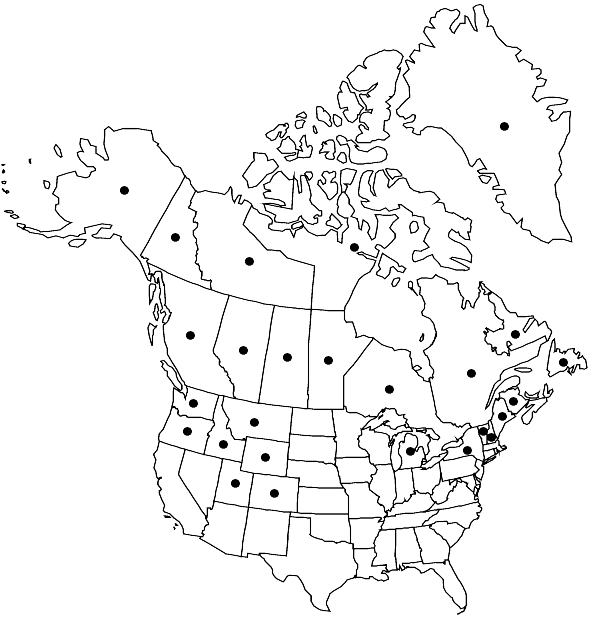Niphotrichum canescens
in R. Ochyra et al., Cens. Cat. Polish Mosses, 137. 2003,.
Plants medium-sized and fairly slender to large, in loose or dense patches or tufts, dull green, yellow-green or yellow-brown, often hoary when dry. Stems (1–)3–10(–12) cm, sparingly or profusely irregularly branched or often regularly pinnately branched with short, tuft-like branchlets. Leaves straight to distinctly falcate, imbricate when dry, patent to recurved when moist, ovate to broadly ovate-lanceolate, (1.5–)2–2.8(–3.3) × 0.8–1.3 mm; margins broadly recurved to revolute throughout; apices rather abruptly narrowed, hyaline or not, sometimes muticous, usually awned, awns broad and stout to subulate, not reflexed, not or distinctly decurrent, mostly serrulate and spinulose, papillose distally and strongly so basally; costa weak, extending 1/2–3/4 way up the leaf, flattened and weakly convex abaxially, 90–120 µm wide near the base; basal cells rectangular, 30–50 × 4–7 µm strongly papillose with large papillae, often epapillose in 1–3 rows at the insertion; alar cells usually rounded and inflated in 3–5 rows, thin-walled, hyaline to yellowish hyaline, forming prominent, decurrent, somewhat inflated auricles; supra-alar cells elongate, thin- and straight-walled, producing a pellucid marginal border of 20–30 cells; medial and distal laminal cells rectangular, 10–30 × 5–10 µm, strongly papillose. Inner perichaetial leaves membranous, hyaline, acute, usually with hyaline awns. Seta dark red to reddish brown, 5–25 mm. Capsule brown, narrowly ellipsoid to cylindric, 1.5–2.5 mm, smooth to somewhat furrowed when dry; peristome teeth 600–800 µm, reddish brown, densely papillose. Spores 8–11 µm.
Distribution

North America, Eurasia.
Discussion
Subspecies 2 (2 in the flora).
Niphotrichum canescens is separated from all other congeners by its leaves broadly canaliculate to obtusely keeled in the distal portion, stout awns that are strongly papillose throughout and weakly serrulate, and short and forked costae ending well before the apex, usually in mid leaf or at three quarters of the leaf length.
Selected References
None.
Key
| 1 | Plants mostly robust; leaves ovate to broadly ovate-lanceolate, hyaline at the apex, strongly obtusely keeled and cucullate distally; awns non-decurrent. | Niphotrichum canescens subsp. canescens |
| 1 | Plants fairly gracile; leaves ovate-lanceolate to broadly ovate-lanceolate, chlorophyllose at the apex, less obtusely keeled in the upper part; awns decurrent. | Niphotrichum canescens subsp. latifolium |